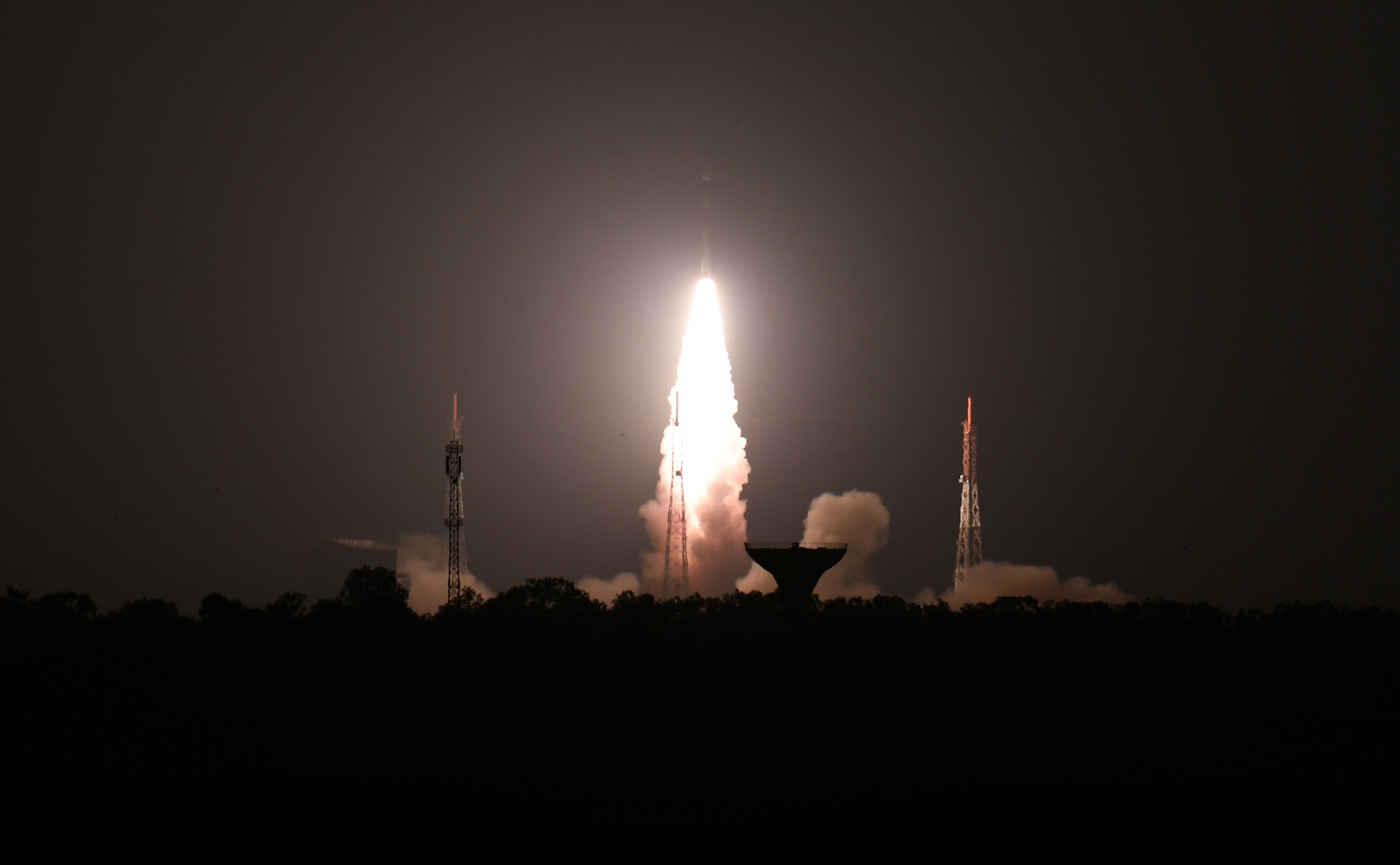India launches pint-sized satellite designed by students
An Indian Polar Satellite Launch Vehicle takes off from Sriharikota in Andhra Pradesh carrying a micro-satellite designed by school children (ARUN SANKAR)
Sriharikota (India) (AFP) – A lightweight satellite designed by students that can be held in the palm of the hand has been launched by Indian scientists, burnishing the country’s credentials in miniature design technology.
The 10-centimetre (four-inch) cube satellite, named Kalamsat V2, weighs just 1.2 kilograms (2.6 pounds), according to students from the private Space Kidz India group who designed the celestial unit.
It was launched from the Sriharikota space centre in southern Andhra Pradesh state on Thursday, drawing praise from Prime Minister Narendra Modi.
“Heartiest congratulations to our space scientists for yet another successful launch of PSLV (Polar Satellite Launch Vehicle). This launch has put in orbit Kalamsat, built by India’s talented students,” Modi tweeted.
The launch was another feather in the cap for the Indian Space Research Organisation (ISRO), which won Asia’s race to Mars in 2014 when one of its spacecraft reached the Red Planet on a shoestring budget.
India has been vying for a larger slice of the booming commercial satellite launch business as phone, internet and other companies seek expanded and more high-end communications.
The Kalamsat V2 was built at a cost of 1.2 million rupees ($16,900), said Srimathy Kesan, the CEO and founder of Space Kidz India.
It will serve as a communications satellite for ham radio transmissions used by amateurs for non-commercial activities.
In 2017 an even smaller satellite, weighing just 64 grams and designed by the same group, was launched in the US aboard a NASA rocket, but never reached orbit.
The main payload on Thursday’s launch was the 740-kilogram Microsat-R that will be used to take high-resolution photos of Earth for defence research.
India has made giant strides in its space journey, launching a record 104 satellites in a single mission in 2017. It has also built a reputation as a reliable low-cost option for space exploration.
Disclaimer: This story is published from a syndicated feed. Siliconeer does not assume any liability for the above story. Validity of the above story is for 7 Days from original date of publishing. Content copyright AFP.


